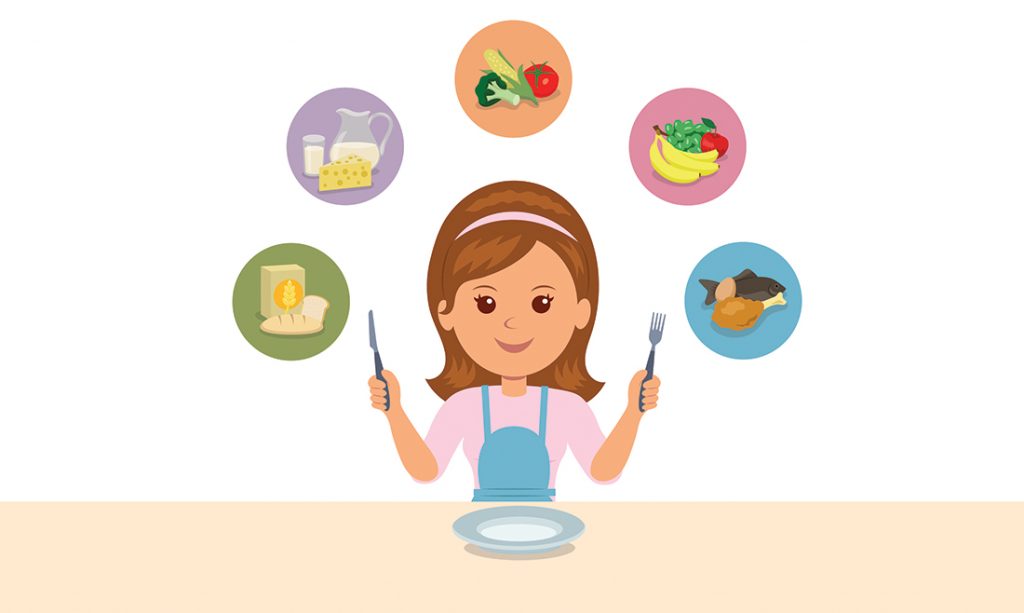As our kids grow, so do their appetites and dietary needs. Some are pickers, others are guzzlers and often parents are faced with a battle to get their kids eating a balanced diet or eating at all.
The best way for your child to eat healthy is to serve a variety of foods from each of the five food groups every day. Each food group has important nutrients that contribute to a healthy diet.
Children need healthy and nutritious food for growing minds and bodies. Eating a variety of foods from the five food groups provides them with enough nutrients that are essential for good health, growth and development.
The five food groups are made up of:
-
Grains and cereal
-
Milk, cheese, yoghurt (and dairy alternatives)
-
Vegetables and legumes/beans
-
Fruit
-
Lean meat, fish, poultry (and meat alternatives)
So, how much is too much or too little? And when can parents take comfort in knowing they are providing a balanced diet that falls within the recommended guidelines?
Pregnancy, Birth and Baby, a trusted government-owned service for parents, families and carers, has created useful easy-to-follow guides to help parents navigate this tricky area in a child’s life.
These helpful tips will help parents make daily food plans for healthy kids – including what a serve size looks like, what to do with fussy eaters, tips on healthy options and what’s ok to feed them at each developmental age.
6-12 Months:
At this age, there is no exact amount a baby will eat each day. Try different foods and let them guide you to when they’re full.
1-2 years:
By now your child should be familiar with food but they may not be used to regular mealtimes and will probably want food when they are hungry. Their diet should include grains, fruit, vegetables, dairy and protein.
2-3 years:
When your child reaches two, they should be eating the same food as the rest of the family. Serving sizes will vary from child to child but they should be eating plenty of wholesome food with healthy snacks throughout the day.
4-5 years:
When children reach four, their consumption of food will depend on how active they are. Stir-fries, pasta, meat and vegetables are an excellent way to replenish growing bodies. Your child will be hungry often and eat up to 12 portions of food each day.
Children will get hungry throughout the day, so have a selection of healthy snacks for them to enjoy in-between meals.
Tips for serving vegetables
The reality is that not all kids are fans of veggies. Fussy eaters can make meal time difficult, so here are a few tips on making vegetables more interesting:
- Add chopped vegetables to a bolognaise sauce.
- Veggies like cherry tomatoes, snow peas, green beans, red capsicum, celery or carrot sticks are great to dip with hummus.
- Load vegetables into soups with beans or pasta.
- Most kids like mashed potato, but you can include different mashed veggies for different colours and flavours.

